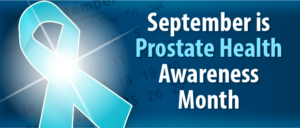September 5, 2019
Prostate Cancer Awareness Month 2019
Knowing your prostate health is important
Prostate cancer is the second most common cancer in men after skin cancer. It’s also the second most deadly after lung cancer. The good news is that prostate cancer can be detected earlier than ever, when treatment is most likely to be effective. Unfortunately, prostate cancer does not offer many signs or symptoms until the latter stages of the disease.
Other than quitting smoking, exercising regularly, and eating a healthy diet, a man’s next best defense is to begin regular screening for prostate cancer at age 50.
Men with a relative who has had prostate cancer may need to start screening at age 40. Once prostate cancer has been diagnosed, treatment depends on a number of factors—not only whether the cancer has spread, but also the man’s age, health, expected life span and level of concern about possible side effects.
“Most prostate cancers develop and grow slowly over many years,” said Fort HealthCare urologist Craig Kozler, M.D. “Symptoms are not often evident in the early stages of the disease. As with most forms of cancer, early detection may be the key to successful treatment and survival.“
There are two types of screenings you can get to check your prostate:
- Digital rectal exam (DRE): A doctor or nurse inserts a gloved, lubricated finger into the rectum to estimate the side of the prostate and feel for lumps or other abnormalities.
- Prostate specific antigen (PSA) test: Measures the level of PSA in the blood. PSA is a substance made by the prostate. The levels of PSA in the blood can be higher in men who have prostate cancer. The PSA level may also be elevated in other conditions that affect the prostate.
Make sure you are up-to-date on all your regular screenings. Fort HealthCare will be giving free screenings in November. There will be further details about time and date in the coming weeks.

